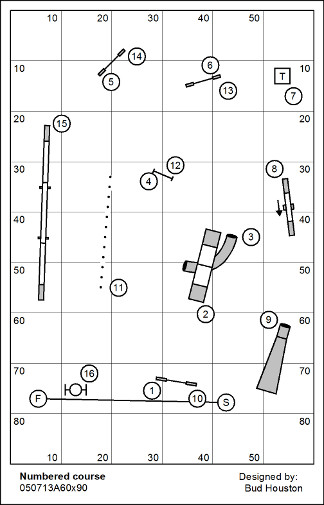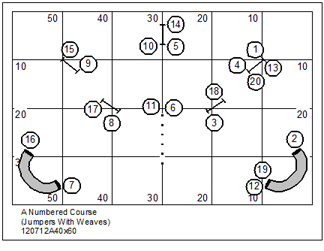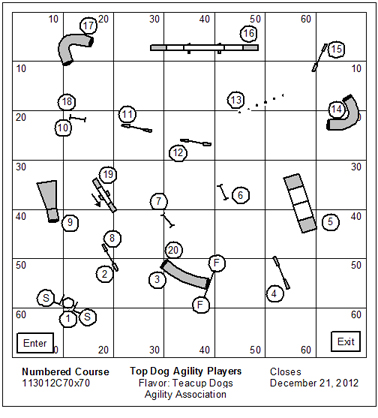The following courses are for July 2022 IDAL play.
Instructors, if you have some specific skills, scenarios, and/or obstacles you want to work when using the IDAL courses in class, please let me know. I will try my best to get them included. If anyone would like to request a specific game to play, let me know.
Folks are always welcome to try their hand at designing league courses!
Briefing for July 2022
This month we are playing our second game of the season. The game this month is What’s My Line. The design is based on a course run in TDAA in April 2022. The course designer is Melissa Wallace. I modified it for more appropriate distances. Please note that Initiates and Dabblers will run the same course as the more experienced handlers because they may plot a path appropriate for their skill level.
The objective of What’s My Line is to plot your own course through the obstacles making sure to take every obstacle once and only once. All obstacles are bidirectional.
Start/Finish Line: The Start/Finish line is also bidirectional. Handlers may set up their dog on either side of the line and may lead out. The dog must start by taking one of the three jumps along the start line (#s 2, 4, or 8). Time starts when the dog takes their first jump. Dogs do not need to finish by taking one of the jumps along the S/F line. If their path included all three jumps before finishing, the dog simply needs to cross the line to stop time. If after taking all obstacles on course, the dog takes one of the jumps along the S/F line a second time as they cross the finish line, they are not faulted.
Each obstacle is worth 1 point. The numbered cones are ONLY for the judge, scribe, and score table. As the dog runs the course, the judge will call out the number of each obstacle as it is completed.
If an obstacle is faulted, dropped bar or missed down contact, the judge will not call out a number. The team will not get the point and the obstacle is counted as attempted. If a dog commits to the A-Frame with 4 paws and bails before crossing the apex, the dog must complete the A-Frame before moving on. The judge will call fault, or something similar, to indicate that you need to retry the frame. If a dog misses the down contact, and the handler reattempts the frame, the team will lose a point for repeating an obstacle.
Scoring: Each obstacle completed correctly earns one point. Repeated obstacles decrease the score by one for each repeated obstacle, except for the finish line obstacles as noted above. The game is scored points, then time. Time is a tiebreaker. The max points for the courses are 10 for the 40×85 and 11 points for the 60×90 and 50×70.
Course Maps
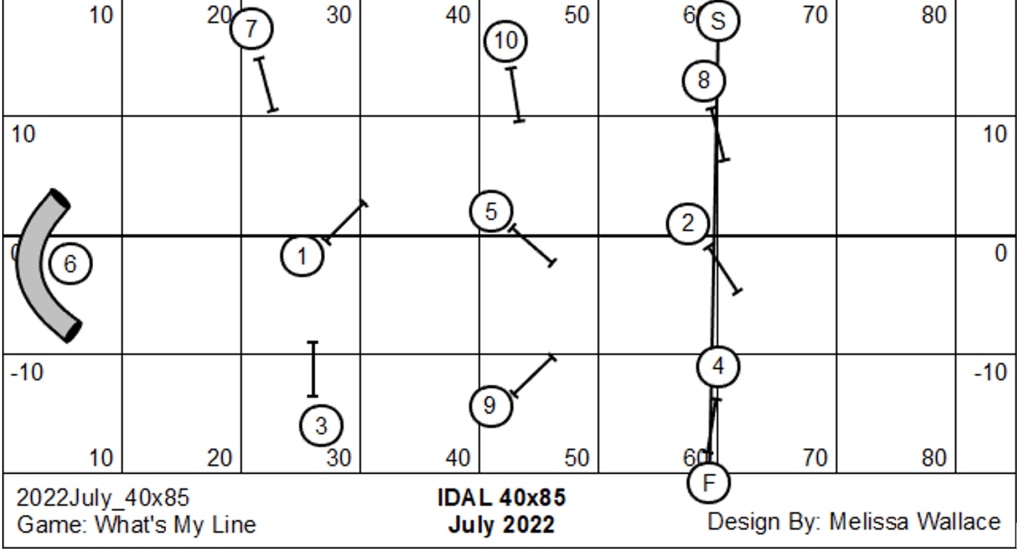
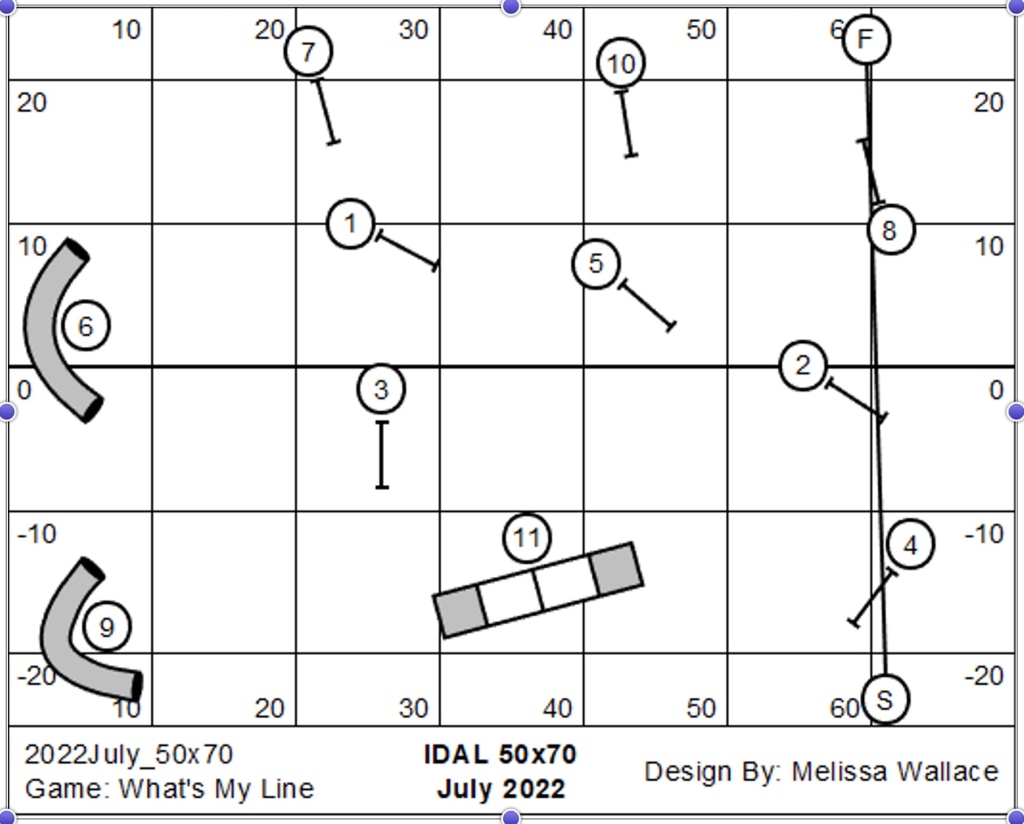
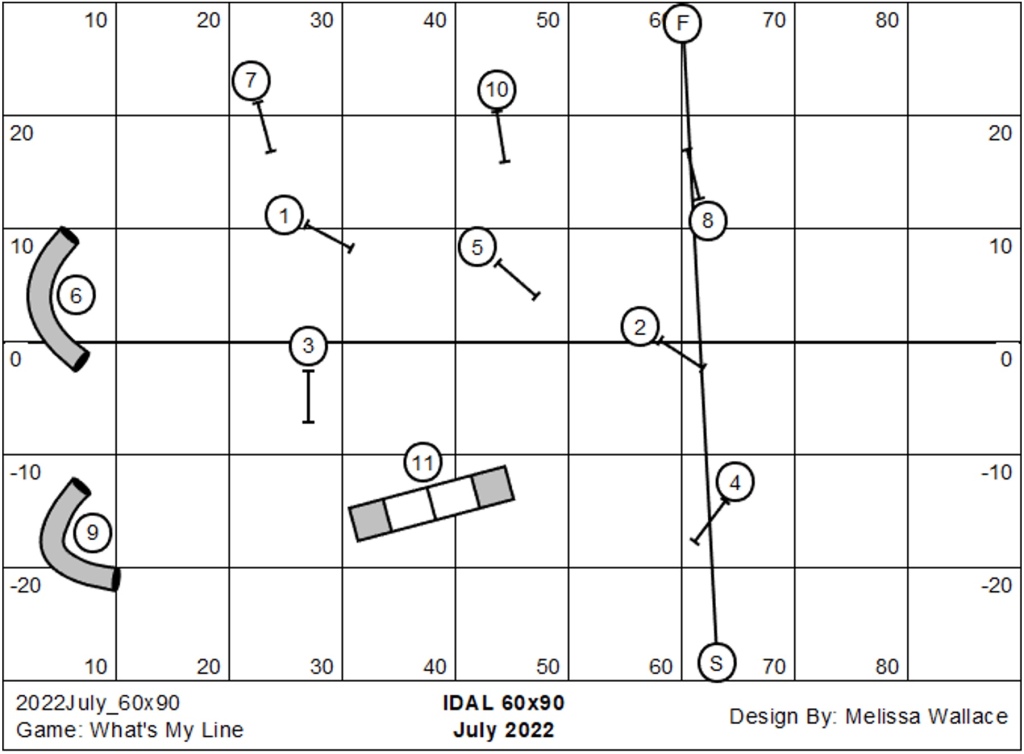
An Open Invitation to New Players
New clubs and individuals are always welcome to join us and play these courses.
Download the scorekeeping worksheet below. Contact the League Secretary to help with the details at pagc.live@gmail.com.
40×85
50×70
60×90
Existing league franchises will be emailed their scorekeeping worksheets set up with their current rosters. If you would like multiple scoresheets, just let me know.
Follow us on Facebook:
https://www.Facebook.com/TopDogAgilityPlayers/
Read our blog:
https://topdogagilityplayers.wordpress.com/
BLOG1639 IDAL
Questions, comments, snide remarks, and feedback go to Melissa Wallace, IDAL Secretary, at pagc.live@gmail.com.


